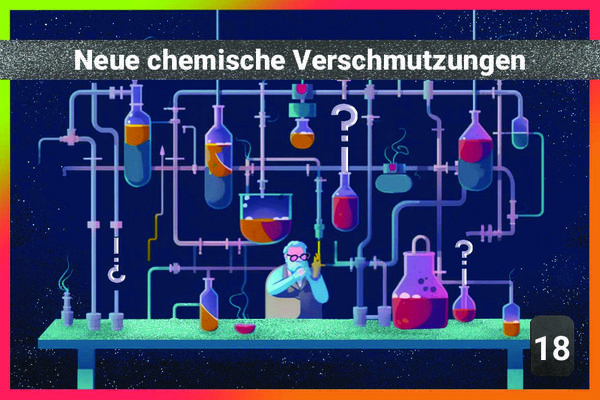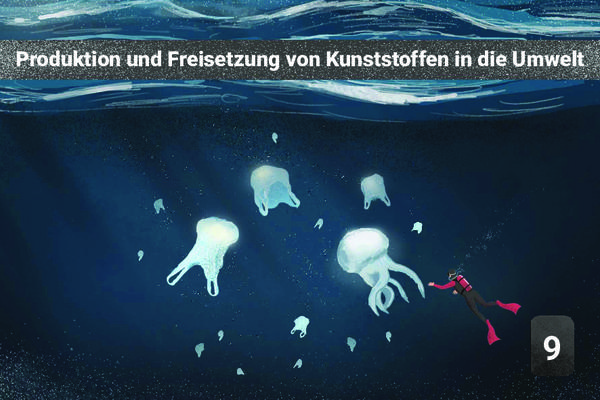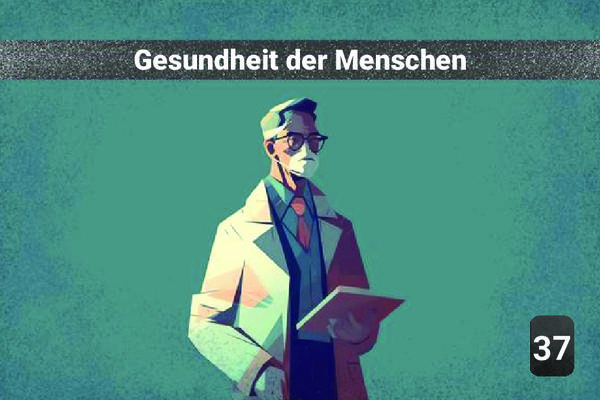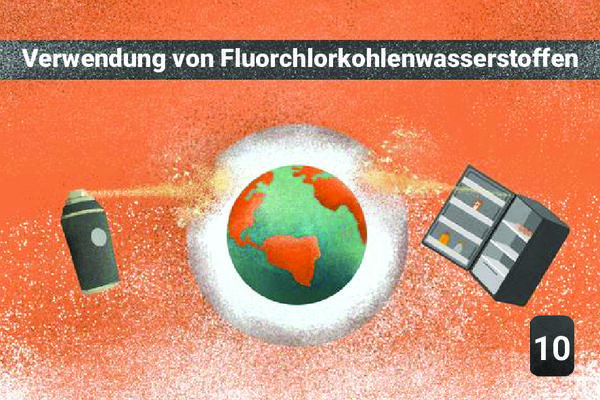18 - New chemical pollution

✏️ Diese Erklärung ist in deiner Sprache noch nicht verfügbar, Hier klicken um deine Übersetzung vorzuschlagen oder schreibe eine E-Mail an fdn.memo@marc-antoinea.fr.
Plastics, pesticides, glyphosate, GMOs, paints, antibiotics, drugs, nanoparticles, heavy metals, radioactive compounds, etc. Two particular families: Persistent Organic Pollutants (POPs) which are NON-biodegradable substances and which pass throughout the food chain. Endocrine disruptors which are substances that influence hormonal functioning. Of the 150,000 chemical substances identified in Europe, only 3,000 have had their impacts on the environment and health assessed. Between 1930 and 2000, global production of chemicals increased 500-fold (half being plastics, and a third being mineral fertilizers).
2Ursachen
Phytosanitary products such as synthetic pesticides (but not only) are among the new chemical entities circulating in the Earth system.
It's raining plastic. A study carried out in the Pyrenees shows the deposition of 365 plastic micro-particles per m2 per day (published in Nature in 2019)
8 million tonnes: this is the quantity of plastic polluting marine ecosystems each year according to the Ellen MacArthur Foundation. This is the equivalent of one garbage truck being dumped at sea every minute. If nothing is implemented, this number will increase to two per minute by 2030, and to four per minute by 2050, specifies the Foundation
2Auswirkungen
500,000 tonnes of microplastics are dumped into the oceans each year. A majority of these microparticles come from the washing of synthetic textiles (60% of the composition of our clothes). This pollution, which is increasing sharply, affects “at least 267 species, including 86% of sea turtles, 44% of seabirds and 43% of marine mammals. »
Once in the environment as macro- or microplastic, plastic contaminates and accumulates in agricultural soils, terrestrial and aquatic food chains, and water supplies. Microplastics that enter the human body through direct exposure, either by ingestion or inhalation, can cause various health problems; inflammation, genotoxicity, oxidative stress, apoptosis, and necrosis. These mechanisms are linked to many health problems, including cancers, cardiovascular diseases, intestinal inflammation, diabetes, rheumatoid arthritis, chronic inflammation, autoimmune diseases, neurodegenerative diseases, and strokes https://www.ciel.org/wp-content/uploads/2019/03/Plastic-Health-French.pdf
1Andere mögliche Ursache
CFCs are new entities created by mankind. The link is optional, as they are no longer produced except in very small quantities and clandestinely in Asia. They do not exemplify the diversity and quantity of new entities currently being released. They are, however, an example of new entities that have had a real and undesirable effect on the functioning of the Earth system.





